Patella Tendinopathy
Hello and welcome back to the ThreeSpires Physiotherapy blog where we take a look at all things physiotherapy and health related. In this blog we are going to look at another of the large tendons in the body that sometimes becomes irritated and can be a source of knee pain especially for runners: Patella Tendinopathy.
In general when we are looking at a new condition in our physiotherapy blog I begin by defining exactly what the condition is. Now, for Patella Tendinopathy it is easier firstly to have a think about the structure involved and then consider what is going on inside the Patella Tendon that might be causing pain.
What is the Patella Tendon?
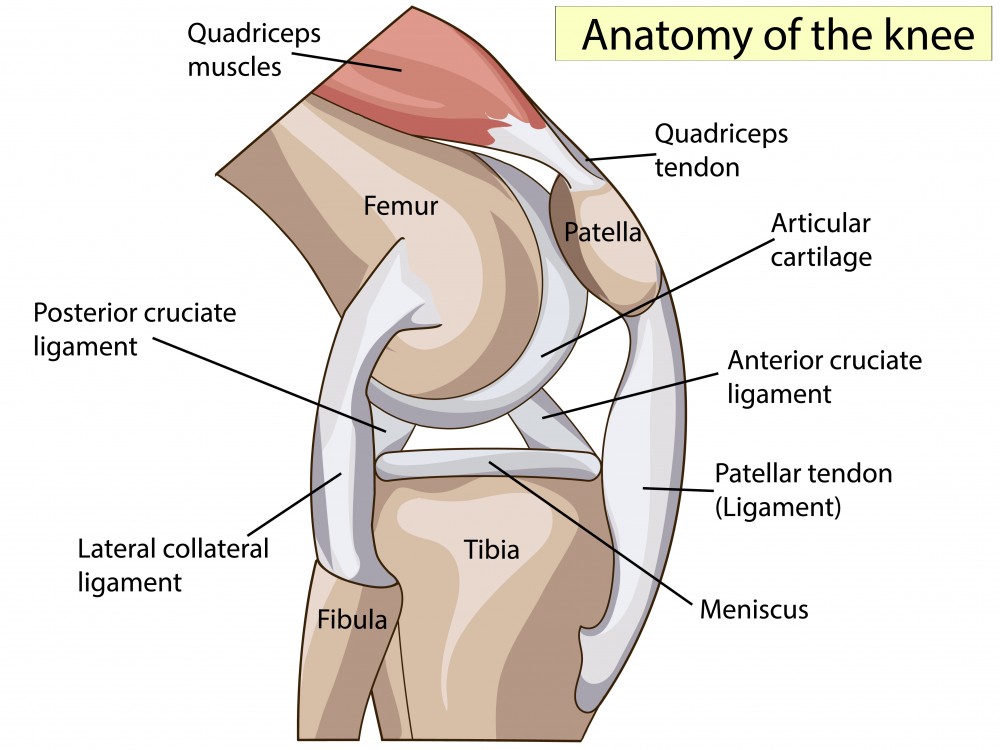 Okay, before we begin thinking about how the Patella Tendon gets injured we first need to know a bit of anatomy. The Patella Tendon is found at the front of your knee just underneath your kneecap (patella) and connects the patella to the tibia at the tibial tuberosity. Now this makes everything sound very simple but in fact the patella tendon is fairly special in that it is a continuation of the quadriceps tendon which runs from the muscles of the quads and then around the patella and forms the patella tendon. Something else to note (for those pub quizzes) is that the patella itself is the largest sesamoid bone in the human body. The purpose of the patella tendon is to enable a connection from the quads via the patella to the tibia and to allow knee extension. if you look at the picture of the knee on this page you will note that it has ligament in brackets underneath the patella tendon, this is because some text books will classify the patella tendon as a ligament because it attaches bone to bone rather than muscle to bone. For our purposes it is easiest to think of it as a tendon that is a an extension of the quadriceps tendon and that it connects the quads to the tibia via the patella. It is very easy to find: simply put your fingers on your kneecap and then go down about an inch or two and you should find a fibrous band: this is the patella tendon. As with all tendons it is non-contractile and simply transfers load from the muscles to the bones. Tendons such as the patella tendon are made of collagen and will have much lower blood flow than the muscles which form it such as rectus femoris and as such have a tendency to heal and repair slowly. The Patella Tendon is an essential structure in all movement on your feet and enables you to straighten your knee, squat, get out of a chair, go up or down stairs and is critical during normal walking or running gait.
Okay, before we begin thinking about how the Patella Tendon gets injured we first need to know a bit of anatomy. The Patella Tendon is found at the front of your knee just underneath your kneecap (patella) and connects the patella to the tibia at the tibial tuberosity. Now this makes everything sound very simple but in fact the patella tendon is fairly special in that it is a continuation of the quadriceps tendon which runs from the muscles of the quads and then around the patella and forms the patella tendon. Something else to note (for those pub quizzes) is that the patella itself is the largest sesamoid bone in the human body. The purpose of the patella tendon is to enable a connection from the quads via the patella to the tibia and to allow knee extension. if you look at the picture of the knee on this page you will note that it has ligament in brackets underneath the patella tendon, this is because some text books will classify the patella tendon as a ligament because it attaches bone to bone rather than muscle to bone. For our purposes it is easiest to think of it as a tendon that is a an extension of the quadriceps tendon and that it connects the quads to the tibia via the patella. It is very easy to find: simply put your fingers on your kneecap and then go down about an inch or two and you should find a fibrous band: this is the patella tendon. As with all tendons it is non-contractile and simply transfers load from the muscles to the bones. Tendons such as the patella tendon are made of collagen and will have much lower blood flow than the muscles which form it such as rectus femoris and as such have a tendency to heal and repair slowly. The Patella Tendon is an essential structure in all movement on your feet and enables you to straighten your knee, squat, get out of a chair, go up or down stairs and is critical during normal walking or running gait.
What is a Tendinopathy?
Right, hopefully you now have a fair idea of where the Patella Tendon is at the knee and what its basic role, so I think we now need to have a quick examination of the terminology used to describe injury to a tendon such as the Patella Tendon. This is made difficult by the problem that there has been a large amount of research into tendons over the years and the terminology used to describe tendon injuries has changed as well but the older terms are still very much in current usage. The modern phrase used to describe damage to a tendon is tendinopathy. The word tendinopathy infers that although there is pain and damage to the tendon there is no actual inflammation whereas the word tendonitis indicates that inflammation is an important part of the problem (itis – in medicine indicates inflammation). Previously the tendon was thought to be inflamed and that this inflammation was a key component of the ongoing pain that anyone with Patella Tendon pain felt. These days although researchers feel that there may be some inflammation this is no longer thought to be the most important part of the problem and so the phrase Patella Tendinopathy is used rather than Patella Tendonitis.
What is Patella Tendinopathy?
Right, I think that is sufficient anatomy and terminology, we now need to begin examining exactly what Patella Tendinopathy is. So Patella Tendinopathy is usually thought of as a pain in the Patella Tendon which is felt at the front of the knee and quite easily located beneath the patella itself that persists over a number of weeks. It can be part of a collection of symptoms called patello-femoral pain (have a read of our article here about this) but it is more specific than patella-femoral pain syndrome in where it is located and felt and most patients with Patella Tendinopathy will feel their pain quite acutely in the patella tendon. It is thought that an initial overload causes some initial damage which then instead of healing as it may well have done in the past has a poor healing response. The tendon instead of just getting sore and then repairing itself becomes degenerative and fails to heal as it should causing ongoing pain and difficulties.
What are the Symptoms of Patella Tendinopathy?
In general the symptoms of Patella Tendinopathy are:
- Pain (can be sharp) and there can be post activity stiffness in the front of the knee just below the knee cap.
- The pain unlike other knee pain is usually very specifically located at the tendon itself.
- Walking downstairs and downhill will often be very painful unlike walking on the flat which will mostly be fine.
An important point to note is that these could be the symptoms of quite a few other conditions and not just Patella Tendinopathy and it is important that you get it confirmed by a professional (such as a physiotherapist) that you actually do have Patella Tendinopathy.
What Causes Patella Tendinopathy?
Patella Tendinopathy is almost always an overuse injury which means that the person involved has been using it more than it could cope with.
Some common causes of Patella Tendinopathy are:
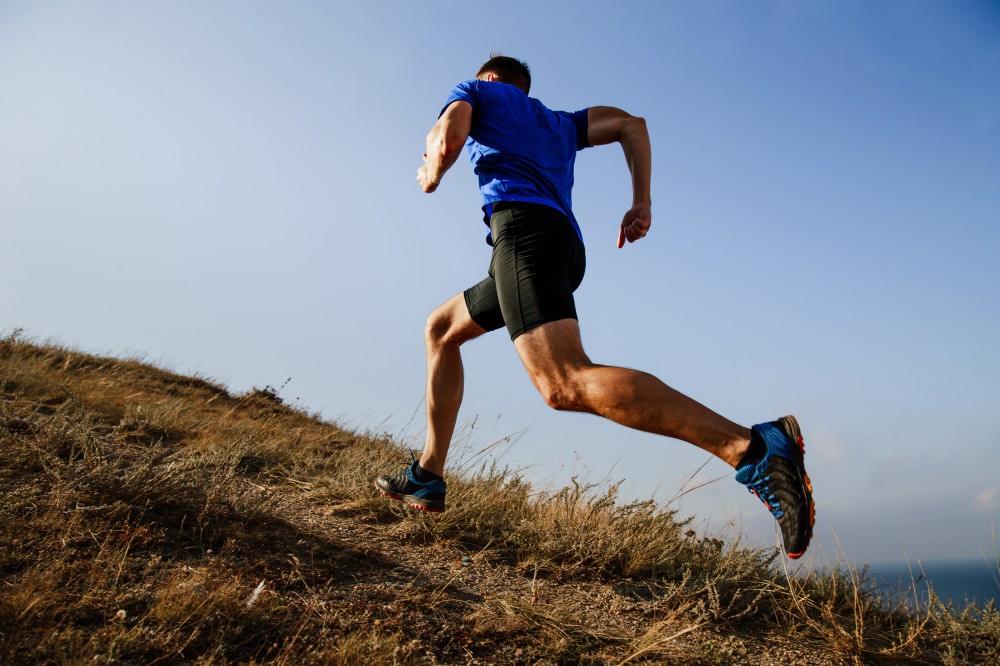 A large increase in the volume of hill walking or running. As anyone who runs uphill can attest to, the muscles of the knee work very hard and the patella tendon itself is no exception to this. The patella tendon and the quads are particularly worked hard during going up or (especially) downhills and as such an increase in the amount of hills that you are running up or potentially the number of mountains you have walked up recently will load up the patella tendon. A sudden increase in the amount of hills that you are walking or running up is a particularly common cause of patella tendinopathy.
A large increase in the volume of hill walking or running. As anyone who runs uphill can attest to, the muscles of the knee work very hard and the patella tendon itself is no exception to this. The patella tendon and the quads are particularly worked hard during going up or (especially) downhills and as such an increase in the amount of hills that you are running up or potentially the number of mountains you have walked up recently will load up the patella tendon. A sudden increase in the amount of hills that you are walking or running up is a particularly common cause of patella tendinopathy.
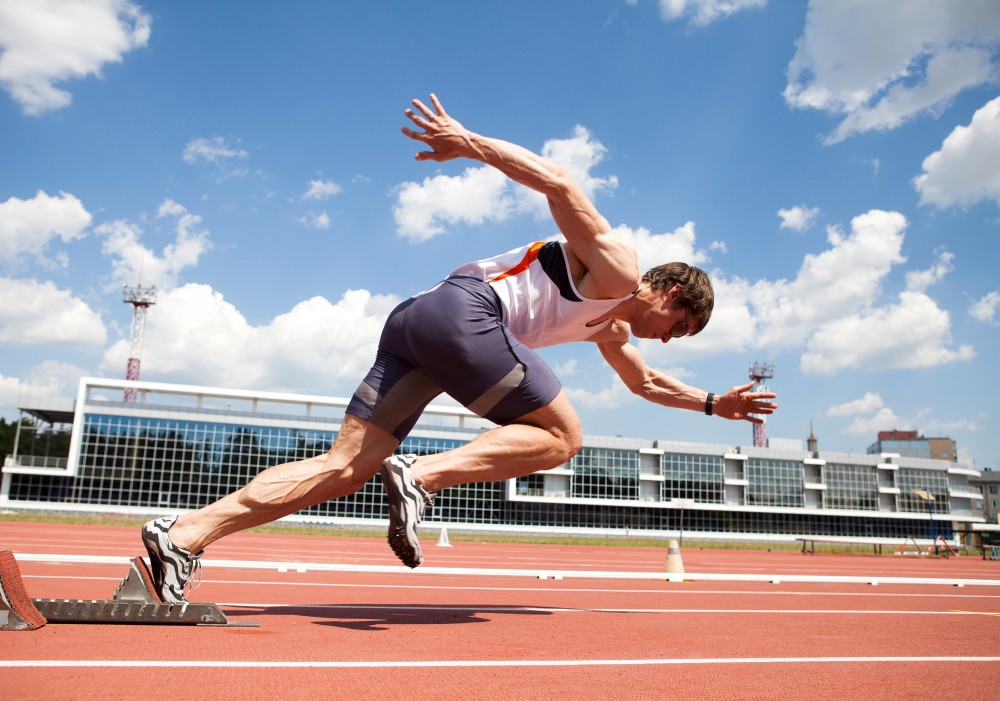 Too much speed or high intensity work. Sprint work, high intensity intervals and track sessions can all load up the patella tendon excessively if not done appropriately and gradually. If you have recently added in a lot of sprints, track work or intense intervals then this may load up your patella tendon more than it is accustomed to and overload it. Certainly as a physio I can attest that from my experience a new program of sprint or speed work can often be the cause of patella tendinopathy.
Too much speed or high intensity work. Sprint work, high intensity intervals and track sessions can all load up the patella tendon excessively if not done appropriately and gradually. If you have recently added in a lot of sprints, track work or intense intervals then this may load up your patella tendon more than it is accustomed to and overload it. Certainly as a physio I can attest that from my experience a new program of sprint or speed work can often be the cause of patella tendinopathy.
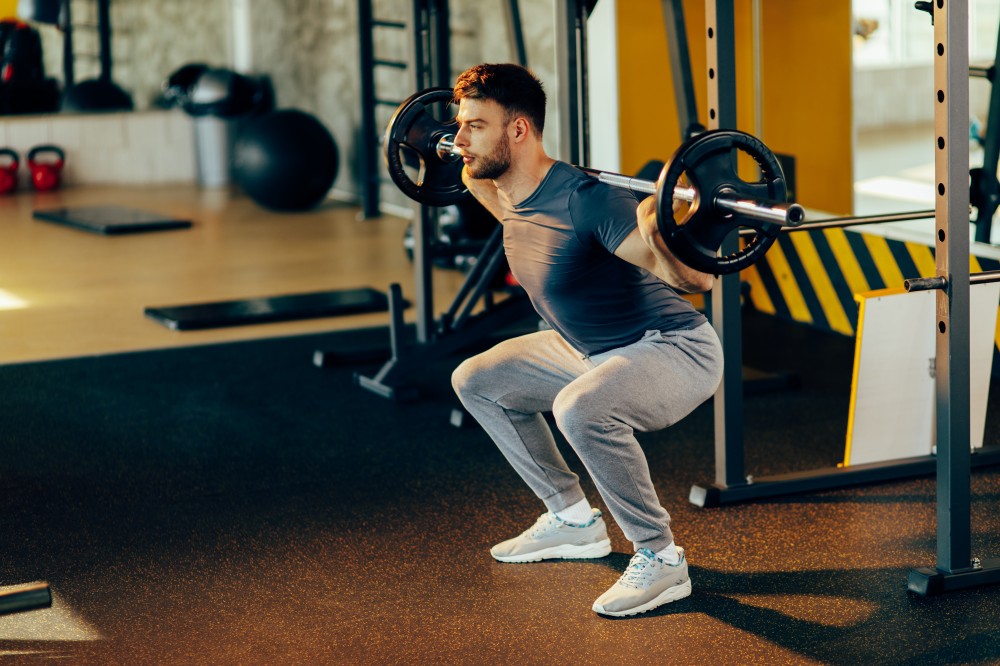 A new leg program at the gym including a lot of squats. Many lower limb exercises at the gym and especially squats will put significant load on the patella tendon (this can be good if done sensibly) and can overload it causing patella tendinopathy. As a physiotherapist I am a big fan of runners doing some strength and conditioning work as it can pay big dividends in terms of injury prevention, however it is important that any new exercises are introduced progressively and built up over time in order to avoid overloading the tendons and ligaments.
A new leg program at the gym including a lot of squats. Many lower limb exercises at the gym and especially squats will put significant load on the patella tendon (this can be good if done sensibly) and can overload it causing patella tendinopathy. As a physiotherapist I am a big fan of runners doing some strength and conditioning work as it can pay big dividends in terms of injury prevention, however it is important that any new exercises are introduced progressively and built up over time in order to avoid overloading the tendons and ligaments.
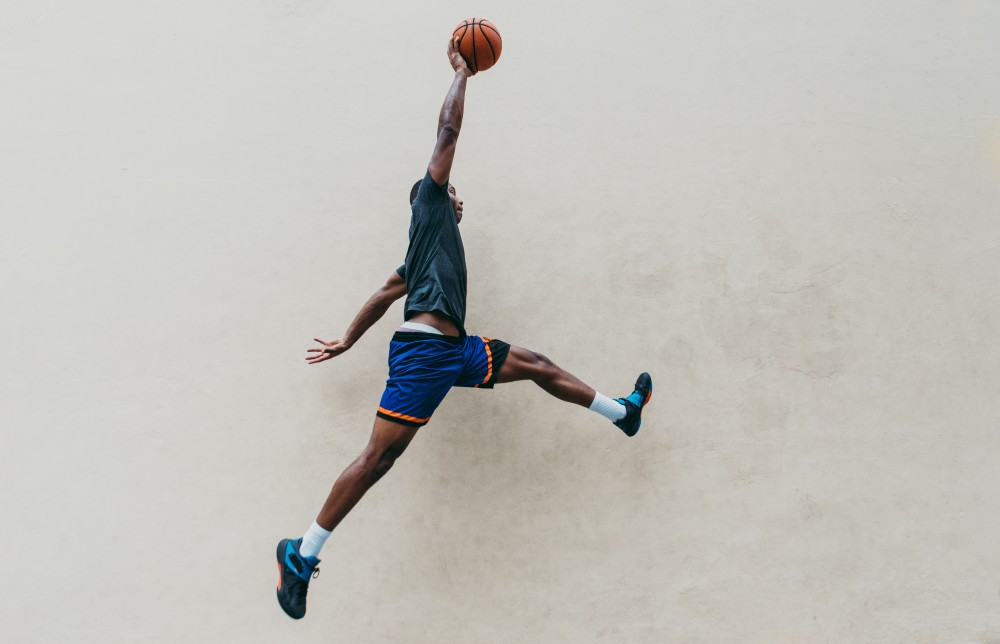 Jumping and landing a lot. Anyone who plays a large amount of basketball, netball or is involved in a jumping sport may overload the patella tendon. The action of jumping and landing involves large forces being transmitted through the knee and the patella tendon. If a player has to perform in more matches or for longer each match or potentially starts training more this can cause overload through the patella tendon.
Jumping and landing a lot. Anyone who plays a large amount of basketball, netball or is involved in a jumping sport may overload the patella tendon. The action of jumping and landing involves large forces being transmitted through the knee and the patella tendon. If a player has to perform in more matches or for longer each match or potentially starts training more this can cause overload through the patella tendon.
I think that with Patella Tendinopathy the main points to note from above are that whenever you flex (bend) or extend (straighten) the knee you are using the patella tendon. As such going up and down steep hills or mountains will add a large amount of load to the tendon. If you have not added in these new activities gradually over time then you are at risk of injuring your patella tendon and developing patella tendinopathy.
Who is at Risk of Getting Patella Tendinopathy?
Pretty much anyone can develop Patella Tendinopathy but there are some risk factors that make people more prone to overloading their Patella Tendon and developing Patella Tendinopathy:
- Men: Males are slightly more at risk of developing Patella Tendinopathy potentially because they are more likely to be involved with sport.
- Diabetes: being a diabetic has a tendency to lower the integrity of tendons and this make someone more prone to Patella Tendinopathy.
- Weight: this is a fairly simple one! The heavier you are the more load you will place through your Patella Tendon.
- General Leg Weakness: not having good control or strength in your hip or knee can often place an increased load on your Patella Tendon. Sometimes the problem will occur on the opposite leg to the one that is actually weak.
How is Patella Tendinopathy Diagnosed?
Most commonly Patella Tendinopathy will be diagnosed through a combination of symptoms and a physical assessment by a physiotherapist. Only rarely will there be a need for investigations and imaging such as an ultrasound scan or MRI. Sometimes patients will initially go to their GP with knee pain and then be referred on to a physiotherapist. The physio at this point will take a full history, do a physical assessment and based on the combination of these factors make a diagnosis of Patella Tendinopathy. As with most sporting injuries It is best to get an early diagnosis of your Patella Tendinopathy as this allows the best management and treatment plan to be devised and for you to get back to your activity as soon as possible. Delaying a diagnosis and letting things worsen will only lengthen the rehab process needed for your Patella Tendinopathy.
Treating Patella Tendinopathy
Optimal treatment for Patella Tendinopathy will depend upon the exact nature of your Patella Tendinopathy and it is important to note that things have been changing a great deal over the years in terms of best management. Below I have put a guide to treatment options and ideas of when it could be best to use the strategies. Most of this is based on research but some is based upon my own experience as a physiotherapist seeing patients with tendinopathies:
 Rest: yes, I understand that this is the advice that you really did not want to hear! Especially if you are a runner or are training for a particular event. However, if you injured your Patella Tendon very recently e.g. last week, then resting for at least a short period will be by far your best strategy. This is because your Patella Tendon is currently in what is known as a “reactive phase” and needs to be rested so that you can then begin doing some rehab. Once you have allowed your symptoms to settle (at least to a point where normal daily activities are fine) you can then think about rehab and returning to your sport.
Rest: yes, I understand that this is the advice that you really did not want to hear! Especially if you are a runner or are training for a particular event. However, if you injured your Patella Tendon very recently e.g. last week, then resting for at least a short period will be by far your best strategy. This is because your Patella Tendon is currently in what is known as a “reactive phase” and needs to be rested so that you can then begin doing some rehab. Once you have allowed your symptoms to settle (at least to a point where normal daily activities are fine) you can then think about rehab and returning to your sport.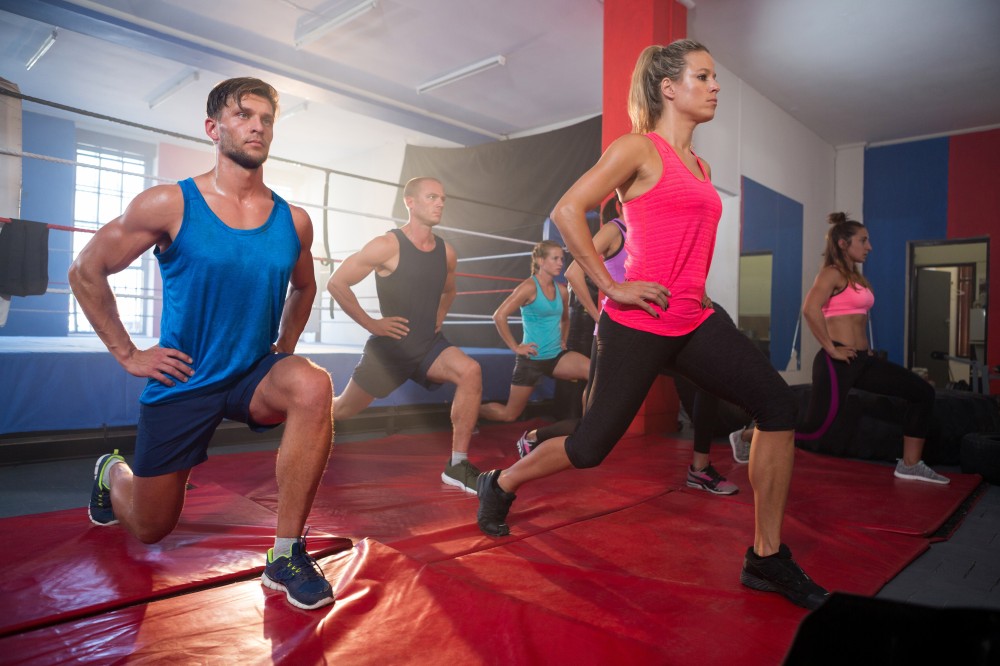 Exercises: as mentioned earlier things have changed quite a bit in terms of the management of Patella Tendinopathy and exercise is an area in which there has been a lot of research. At one point eccentric exercises (lengthening the muscle under tension) were the gold standard of treatment. However, as with all things, further research has come along and suggested that an appropriate amount of load is probably the key component rather than a specific type of exercise. Certainly in my experience as a physio I would suggest that the most important factor for exercises for Patella Tendinopathy is having progressive and appropriate levels of loading rather than a particular type of exercise.
Exercises: as mentioned earlier things have changed quite a bit in terms of the management of Patella Tendinopathy and exercise is an area in which there has been a lot of research. At one point eccentric exercises (lengthening the muscle under tension) were the gold standard of treatment. However, as with all things, further research has come along and suggested that an appropriate amount of load is probably the key component rather than a specific type of exercise. Certainly in my experience as a physio I would suggest that the most important factor for exercises for Patella Tendinopathy is having progressive and appropriate levels of loading rather than a particular type of exercise.- Activity Modification: often with tendinopathies such as Patella Tendinopathy that are often sport related the best approach is to attempt to modify the specific activities that are causing issues. This means that you can still do some training or get out and go walking but you may need to ease back on the things during training that really irritate your patella tendon. Examples of this could be reducing hill reps, avoiding lots of up mountain walking or stopping any sprinting work. This can sometimes take a bit of trial and error and will involve you discussing this with your physiotherapist.
 Strengthening: If one of your legs or possibly your core is not strong enough then it may be possible that your opposite leg is becoming overloaded through the gait cycle. In these cases it is essential that alongside specific exercises for your Patella Tendinopathy that you do some strengthening and control work to reduce the impact and load on your Patella Tendon in the future.
Strengthening: If one of your legs or possibly your core is not strong enough then it may be possible that your opposite leg is becoming overloaded through the gait cycle. In these cases it is essential that alongside specific exercises for your Patella Tendinopathy that you do some strengthening and control work to reduce the impact and load on your Patella Tendon in the future.- Other Treatments: there are currently numerous other options such as plasma rich platelet (PRP) injections and high volume injections but most of these are very much unproven and are at the experimental stage.
Specific Patella Tendinopathy Exercises
As mentioned above my experience (also supported by research) is that the specific type of exercise used for treating Patella Tendinopathy is not as important as slowly and progressively loading the Patella Tendon. That being said, there are still some specific exercises that you can do to help with your Patella Tendinopathy. As such, below is a general guide to exercises for Patella Tendinopathy based on both research and my own experience as a physio. I would however recommend that you have an assessment with a physio first to determine which would be best and how the exercises should be performed.
- Eccentric Exercises: these can be really helpful for when the patient has a very irritable tendon in terms of their training but finds day to day activities okay. They involve contracting a muscle but allowing it to lengthen under tension which for the Patella Tendon means lowering through a squat. Usually this will be done on a 25 – 30 degree decline board (as this targets the Patella Tendon). Initially the patient will be using two legs for the squat and potentially will be putting most weight through the unaffected leg and will then slowly put more load through the injured leg as things improve. Eventually the patient will move to a single leg eccentric squat on the decline board. One thing to note is that this is not a full squat to 90 degrees, rather it is a partial squat down to about 60 degrees and to be done completely in control. For going back up (the concentric phase) the patient needs to use their unaffected leg.
- Concentric Exercises: when you are able to do eccentric squats on the decline board with no symptoms it is time to try concentric exercises. This simply means using your injured leg to help go back up. Concentric exercises involve shortening the muscle under tension. For anyone doing these exercises they will simply be doing partial squats (down to about 60 degrees of knee flexion) on the decline board and coming back up out of the squat using both legs.
- Weighted Squats: once you can do bodyweight squats on the decline board with minimal pain then it is time to begin building up the resistance and to do this you will need to start adding weight to your squats.
The most important idea that I try to convey to all my patients about rehab for Patella Tendinopathy and that I would like anyone reading this article to take away is that the key point of any exercises or rehab is to attempt to progressively build up the load on the tendon. There are a large number of specific protocols out there for Patella Tendinopathy and I think most if followed well will help but in my experience the actual protocol is not as important as following the general principles of progressively increasing the load upon the tendon.
Are My Patella Tendon Exercises Meant to Hurt?
Pain is one of the most difficult issues that patients and physiotherapists face and it generally takes a bit of judgement to decide upon what is acceptable and what is not. Certainly the level of acceptable pain is a difficult issue that any patient trying to strengthen their Patella Tendon will face. It can be difficult when first starting rehab but needs some thinking about when trying to decide which exercises are best and what level to start with.
I guess the quick answer to the question posed above is that yes, potentially a certain amount of pain will be okay when doing Patella Tendon rehab but you will have to be wary about the level of pain and if your symptoms begin worsening after the exercise. As the exercises are designed to provoke and strengthen your Patella Tendon it is likely (especially in the early days) that they will be uncomfortable but the important point to note is that they should not make it worse afterwards or in the night after. In general my advice to patients with Patella Tendinopathy is that exercises can be a bit uncomfortable but they should not be getting pain exceeding 2-3/10 on a pain scale and more importantly they should not feel worse afterwards. So, I would always prefer patients to take it easy on the exercises for the first few sessions so that they get an idea of how their Patella Tendon is going to react to the exercises. As an example: if the patient is doing eccentric squats on the decline board and the exercises feel in general okay with possibly a slight amount of irritation (2/10 pain scale) plus they do not get worse pain or stiffness afterwards then this is a good sign that the exercises are at an appropriate level.
One further thing to think about is that I would strongly advise getting an assessment with a physiotherapist who has experience of Patella Tendinopathy and who can then guide you on the best exercises and how hard to push things. No amount of information here can really replace that assessment and guidance process by the physio for your Patella Tendinopathy and nor should it. This information is really only for those trying to get a bit more information about their Patella Tendinopathy.
How Long Will it Take for My Patella Tendinopathy to Heal?
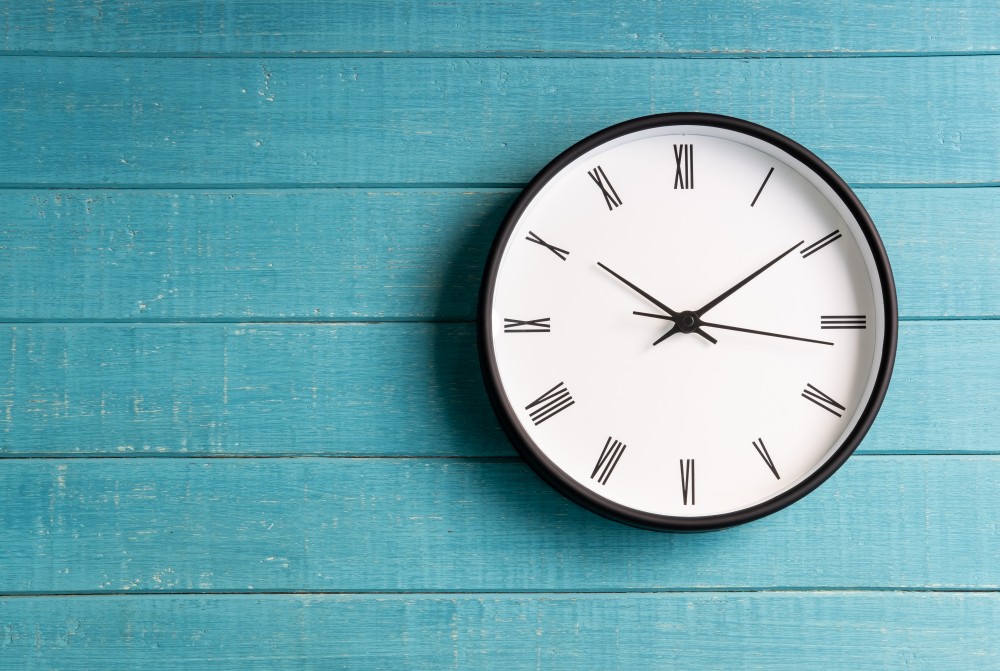 This is often the (apart from what is wrong with knee?) most burning question that patients have and is something that as a physiotherapist seeing patients with Patella Tendinopathy I get asked a lot. Potentially the answer to this question will depend upon several factors: firstly, the level of pain in your tendon, for example is it 1-2/10 or is it 10/10? Secondly, how long your symptoms have been going on for e.g. have they just started or is this something that has been going on for a year? I think fairly obviously If you see someone early and don’t let the pain in your Patella Tendon become too severe then your recovery is likely to be much quicker. A reasonable timeframe if caught early enough would be 8 – 12 weeks before you will be fully fit again but obviously this very much depends upon the stage that your tendon is at.
This is often the (apart from what is wrong with knee?) most burning question that patients have and is something that as a physiotherapist seeing patients with Patella Tendinopathy I get asked a lot. Potentially the answer to this question will depend upon several factors: firstly, the level of pain in your tendon, for example is it 1-2/10 or is it 10/10? Secondly, how long your symptoms have been going on for e.g. have they just started or is this something that has been going on for a year? I think fairly obviously If you see someone early and don’t let the pain in your Patella Tendon become too severe then your recovery is likely to be much quicker. A reasonable timeframe if caught early enough would be 8 – 12 weeks before you will be fully fit again but obviously this very much depends upon the stage that your tendon is at.
What Exercises or Activities Should I Avoid for my Patella Tendinopathy
There are not really any specific exercises that you must avoid rather it is a case of avoiding irritating your tendon too much or overloading. However, certainly when your tendon is in the early stages of rehab I think it is wise to avoid steep hills and in particular lots of difficult steep descents if running or hill walking. If you go the gym the I would say that deep squats should be avoided for a while.
How Can ThreeSpires Physiotherapy Help with My Patella Tendinopathy?
Physiotherapy is extremely helpful if you have developed Patella Tendinopathy and one of our physiotherapists who is experienced with managing and treating Patella Tendinopathy will be able to help. We can help in a number of ways:
- Assessment & Diagnosis of Patella Tendinopathy: this as mentioned earlier is a vital part of healing your tendinopathy and the sooner you have an assessment the sooner you will know what you are dealing with. Our physiotherapists will be able to comprehensively assess your Patella Tendinopathy, make a diagnosis and also identify underlying biomechanical causes of your Patella Tendinopathy such as core weakness.
- Load Management Plan: once a diagnosis of Patella Tendinopathy has been made it is vital that you get a clear and comprehensive plan to reduce the load and irritation on your tendon and begin healing and recovering. Your physiotherapist will be able to identify which stage your Patella Tendon is at and what the appropriate load will be to promote recovery. They will be able to assess and guide you through this process to optimise your return to training and activity.
- Exercises for Patella Tendinopathy: your physiotherapist will be able to determine which are the most appropriate exercises for your Patella Tendinopathy and will be able to prescribe the optimum number and frequency to promote recovery.
- Treatment for Patella Tendinopathy: In conjunction with load management and exercises your physio will be able to use soft tissue and hands on techniques to treat any areas of your legs that have become overloaded and tight.
- Supplementary Exercises for Patella Tendinopathy: as part of your assessment for Patella Tendinopathy your physiotherapist will also look at strength and biomechanics in your legs and see if there are any imbalances or weaknesses that might be contributing towards your tendon getting overloaded. As such they will likely prescribe a series of other exercises designed to improve strength and control and reduce the likelihood of you developing Patella Tendinopathy in the future.
Okay, I hope that you have found this article about Patella Tendinopathy helpful, over the next few months we will be doing a series of further articles about other tendinopathies and the best exercises and some of the latest research surrounding tendinopathies. Should you or anyone you know have developed Patella Tendinopathy please get in touch and one of our physios would be happy to help.
REQUEST A CALLBACK
Just fill in the form below and give us a quick idea of your problem/request so that we can be better prepared to help you.
